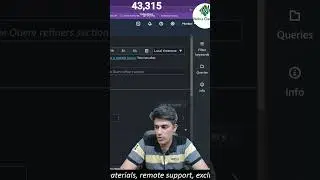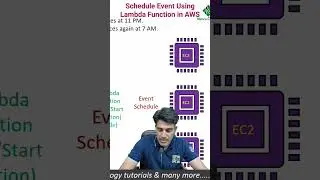Configure Domain Name Server (DNS) in RHEL 8 | Name Server Configuration in Linux | Nehra Classes
Domain Name Server Configuration in RHEL 8 (CentOS 8):
======
DNS is a service that helps to resolve a fully qualified domain name (FQDN) into an IP address and additionally, perform a reverse translation- translation of an IP address to a user-friendly domain name.
Step 1: Install bind DNS packages.
dnf install bind bind-utils
Start the DNS server using the command below:
systemctl start named
Next, enable it so that it can kick in even after a reboot
systemctl enable named
Just to be sure that the service is running as expected, check its status
systemctl status named
Step 2: Configure bind DNS server
Let’s take a backup of the config file /etc/named.conf
cp /etc/named.conf /etc/named.bak
Now go ahead and open the file using your preferred text editor.
vim /etc/named.conf
Under the ‘Options’ section, ensure you comment out the lines indicated below to enable the Bind DNS server to listen to all IPs.
// listen-on port 53 { 127.0.0.1; };
// listen-on-v6 port 53 { ::1; };
Additionally, locate the allow-query parameter and adjust it according to your network subnet.
allow-query { localhost; 192.168.1.0/24; };
This setting allows only the hosts in the defined network to access the DNS server and not just any other host.
To define the reverse and forward lookup zones, copy and paste the following configuration at the end of /etc/named.conf
//forward zone
zone "nehraclasses.local" IN {
type master;
file "nehraclasses.local.db";
allow-update { none; };
allow-query { any; };
};
//backward zone
zone "1.168.192.in-addr.arpa" IN {
type master;
file "nehraclasses.local.rev";
allow-update { none; };
allow-query { any; };
};
Step 3: Create a forward DNS zone file for the domain
vim /var/named/nehraclasses.local.db
$TTL 86400
@ IN SOA primary-dns.nehraclasses.local. admin.nehraclasses.local. (
2020011800 ;Serial
3600 ;Refresh
1800 ;Retry
604800 ;Expire
86400 ;Minimum TTL
)
;Name Server Information
@ IN NS primary-dns.nehraclasses.local.
;IP Address for Name Server
primary-dns IN A 192.168.1.115
;Mail Server MX (Mail exchanger) Record
nehraclasses.local. IN MX 10 mail.nehraclasses.local.
;A Record for the following Host name
www IN A 192.168.1.50
mail IN A 192.168.1.60
;CNAME Record
ftp IN CNAME www.nehraclasses.local.
Step 4: Create a reverse DNS zone file for the domain
vim /var/named/nehraclasses.local.rev
$TTL 86400
@ IN SOA primary-dns.nehraclasses.local. admin.nehraclasses.local. (
2020011800 ;Serial
3600 ;Refresh
1800 ;Retry
604800 ;Expire
86400 ;Minimum TTL
)
;Name Server Information
@ IN NS primary-dns.nehraclasses.local.
primary-dns IN A 192.168.1.115
;Reverse lookup for Name Server
35 IN PTR primary-dns.nehraclasses.local.
;PTR Record IP address to Hostname
50 IN PTR www.nehraclasses.local
60 IN PTR mail.nehraclasses.local
Next, assign the necessary file permissions to the two configuration files.
chown named:named /var/named/nehraclasses.local.db
chown named:named /var/named/nehraclasses.local.rev
To confirm that the DNS zone lookup files are free from any syntactical errors, run the commands shown:
named-checkconf
named-checkzone nehraclasses.local /var/named/nehraclasses.local.db
named-checkzone 192.168.1.115 /var/named/nehraclasses.local.rev
For the changes to be reflected in the system, restart the Bind DNS server
systemctl restart named
Add Firewall Rule.
firewall-cmd --add-service=dns --zone=public --permanent
firewall-cmd --reload
Step 5: Test the Bind DNS server from a client system
vim /etc/resolv.conf
nameserver 192.168.1.115
vim /etc/sysconfig/networkk-scripts/ifcfg-ens033
DNS=192.168.1.115
systemctl restart NetworkManager
Using the nslookup command test the Bind DNS server as shown:
nslookup primary-dns.nehraclasses.local
nslookup mail.nehraclasses.local
nslookup www.nehraclasses.local
nslookup ftp.nehraclasses.local
nslookup 192.168.1.115
The output from the nslookup command confirms that the forward DNS lookup is working as expected.
Moreover, you can also use the dig command as shown
dig primary-dns.nehraclasses.local
To perform a reverse DNS lookup, use the dig command as shown:
dig -x 192.168.1.115
Perfect! The reverse DNS lookup is also working as we would expect.
===
©COPYRIGHT. ALL RIGHTS RESERVED.
#NehraClasses #LinuxTraining #Trending
Смотрите видео Configure Domain Name Server (DNS) in RHEL 8 | Name Server Configuration in Linux | Nehra Classes онлайн, длительностью часов минут секунд в хорошем качестве, которое загружено на канал Nehra Classes 16 Сентябрь 2020. Делитесь ссылкой на видео в социальных сетях, чтобы ваши подписчики и друзья так же посмотрели это видео. Данный видеоклип посмотрели 12,168 раз и оно понравилось 212 посетителям.































